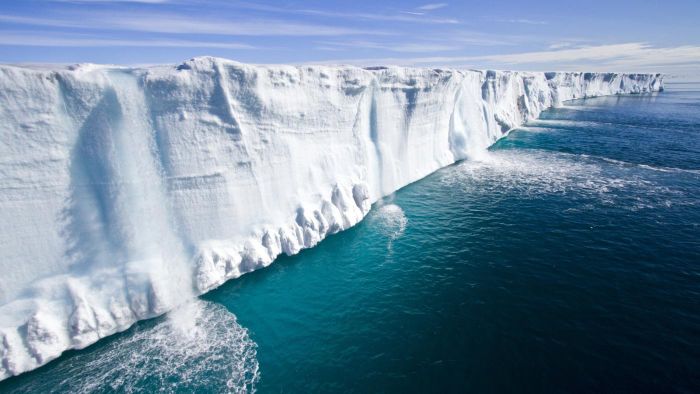Western Antarctica is melting slowly but surely.
南极洲西部正在缓慢融化。
Right now, the most important thing to note is the slowly part.
现在最重要的是注意它的“缓慢”。
97% of the Antarctica peninsular is still covered by ice, so it's not that it's all melting, it's all gonna go away like that.
南极半岛的97%仍然被冰雪覆盖,所以并不是说一切都融化了,但一切都会像那样融化。
But little by little the 30 million cubic kilometers of ice that covered Antarctica is seeping into the ocean.
但是渐渐地,覆盖南极洲的三千万立方公里寒冰正在向海洋逼近。
A small amount that ice melting is enough to make a significant contribution to the water going into the ocean
少量冰川融化足以让海洋灌满水。
which makes significant contribution to sea level rise.
而这又进一步导致海平面上升。
NASA estimates that since 2004 Antarctica has been dripping 118 billion metric tons of ice to the ocean every year,
美国宇航局估计自2004以来,南极洲每年向大海倾斜1180亿公吨寒冰。

much faster than scientists predicted.
这比科学家预测的要快得多。
And one the biggest challenges globally from all of this warming,
冰川融化给全球带来的主要挑战之一,
this melt is that a lot of human population lives near sea level,
我认为是许多人临海而居,
a lot of big cities, a lot of agricultural land, a lot of vulnerable coastline.
还有一些城市,农业用地,脆弱的海岸线等。
Those changes directly tie the human impacted climate change are making the continent greener, quicker.
这些变化直接来源于人类影响下的气候变化,南极大陆正在“变绿”,融化速度也在加快。
As we know, Antarctica has been the place that has registered the biggest increases in temperature.
据我们所知,南极是气温上升最快的地方。
We've had approximately an increase of 3 degree in the last 50 years.
过去50年气温上升了差不多三度。
Researchers say the upshot of all this melting if we do not change things,
研究人员说,如果我们还不有所改变,
it's that sea levels could rise over 3 meters sometime the next 200 years.
那么未来两百年,海平面的上升高度会超过三米。
Kevin Enochs, VOA News.
美国之音,凯文·伊诺克斯报道。











